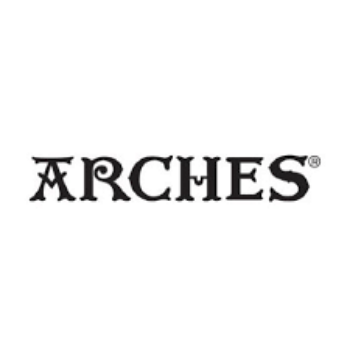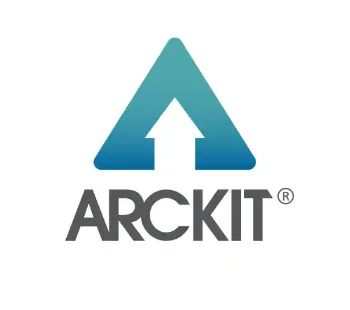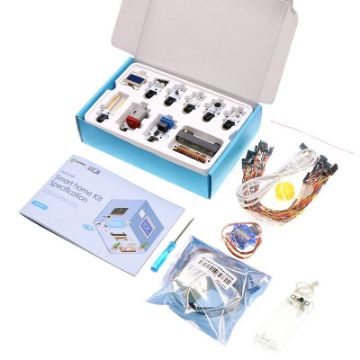From the same category
SG Micro:bit V2 Project Kit
SG CSKIT2
Build up to six projects straight out of the box with this great value SG Education Project Kit for the BBC micro:bit. The perfect way to get started with programming and hardware interaction. No soldering required, all parts are included to build 6 projects. Small prototype breadboard and 2 x AAA Batteries are included.
Included in the kit are:
BBC Micro:Bit
Mini Breadboard
Shielded Croc Leads
USB to mini USB cable
Red-Green-Amber LED's
Battery cage
AAA batteries included
The projects that can be built are:
Dice
Theremin
Miniature Steady Hand Game
Fruit Keyboard
Traffic Light
Included in the kit are:
BBC Micro:Bit
Mini Breadboard
Shielded Croc Leads
USB to mini USB cable
Red-Green-Amber LED's
Battery cage
AAA batteries included
The projects that can be built are:
Dice
Theremin
Miniature Steady Hand Game
Fruit Keyboard
Traffic Light
€25.50
Micro:bit V2 Club Class Set of 10
MIC 495
Perfect for sharing the micro:bit with friends, the micro:bit club is a 10 pack containing all the pieces needed to enjoy micro:bit in STEM groups, coding clubs, school classes, scouts, guides and cubs or any other social gathering (contains 10 BBC micro:bits V2, 10x USB cables, 10 x battery holders ; 20x AAA batteries).
The micro:bit is a pocket-sized computer that you can code, customise and control to bring your digital ideas, games and apps to life. Measuring 4cm by 5cm, and designed to be fun and easy to use, users can create anything from games and animations to scrolling stories at school, at home and on the go - all you need is imagination and creativity.
The micro:bit is completely programmable. That means each of its LEDs can be individually programmed as can its buttons, inputs and outputs, accelerometer, magnetometer and Bluetooth Smart Technology. The micro:bit has a website full of coding languages, lesson plans, tutorials, and fun ideas to help you get creative
The micro:bit is a pocket-sized computer that you can code, customise and control to bring your digital ideas, games and apps to life. Measuring 4cm by 5cm, and designed to be fun and easy to use, users can create anything from games and animations to scrolling stories at school, at home and on the go - all you need is imagination and creativity.
The micro:bit is completely programmable. That means each of its LEDs can be individually programmed as can its buttons, inputs and outputs, accelerometer, magnetometer and Bluetooth Smart Technology. The micro:bit has a website full of coding languages, lesson plans, tutorials, and fun ideas to help you get creative
€209.00
Micro:bit V2 GO
MIC 494
With the micro:bit Go Bundle you have a complete set to get started coding right away. This bundle includes a micro:bit board, micro USB cable, battery holder and 2x AAA batteries.
The BBC micro:bit is a pocket-sized computer that introduces you to how software and hardware work together. It has an LED light display, buttons, sensors and many input/output features that, when programmed, let it interact with you and your world. The new micro:bit V2.2 with sound adds a built-in microphone and speaker, as well as an extra touch input button and a power button.
For more information please see below
The BBC micro:bit is a pocket-sized computer that introduces you to how software and hardware work together. It has an LED light display, buttons, sensors and many input/output features that, when programmed, let it interact with you and your world. The new micro:bit V2.2 with sound adds a built-in microphone and speaker, as well as an extra touch input button and a power button.
For more information please see below
€22.95
Micro:bit V2 Loose Single
MIC 548
Micro:bit V2 is a tiny, programmable computer board designed to teach kids and beginners about coding, electronics, and robotics. The board features a range of sensors, buttons, and LED lights that can be programmed using various programming languages and visual programming tools.
Now includes both a speaker and microphone as well as many of the same great features students have used for years. It's easier than ever to use sound and touch to get creative in the classroom.
Using the micro:bit V2, students will be able to sense and react to sound with the built-in microphone and play sound with the built-in speaker while coding in MakeCode, Python, or Scratch!
Now includes both a speaker and microphone as well as many of the same great features students have used for years. It's easier than ever to use sound and touch to get creative in the classroom.
Using the micro:bit V2, students will be able to sense and react to sound with the built-in microphone and play sound with the built-in speaker while coding in MakeCode, Python, or Scratch!
€19.95
ElecFreaks Micro:bit Smart Health Kit
EF08256
The micro:bit Smart Health Kit has a well-selection of the Sensor:bit, Analog UV Sensor, PIR Sensor, MQ3 Alcoholic Sensor Brick, Servo and etc., you could use it to build such themes as the UV light detections, the sitting posture reminder, the alcoholic detector, smart trash can and more, from which we can learn how to program and how to keep healthy living habits in a scientific way. Build better science habits with this ELECFREAKS micro:bit Smart Health Kit.
WHAT'S INCLUDED?1 x Sensor:bit 1 x MO3 Alcohol Sensor 1 x Cash Sensor 1 x Rainbow LED 1 x PIR Sensor 1 x DHT11 Sensor 1 x UV Sensor 1 x Soil Moisture Sensor 1 x Motor with Fan 1 x OLED Screen 1 x EF92A 180° Servo 1 x micro USB cable Jumper wires
WHAT'S INCLUDED?
€79.95
Kitronik MOVE Mini Buggy Kit MK2
KI 5652
The Kitronik :MOVE mini buggy kit Mark 2 for the BBC micro:bit is a fun introduction to robotics. Once built it can be coded for a variety of fun activities.
The Kitronik :MOVE mini MK 2 buggy kit for the BBC micro:bit is the latest version of our ever popular :MOVE mini that provides a fun introduction to robotics. The :MOVE mini is a 2 wheeled robot that is suitable for autonomous operation, remote control projects via a Bluetooth application or being controlled using a second BBC micro:bit as a controller via the microbits radio functionality.
Micro:Bit not included
The Kitronik :MOVE mini MK 2 buggy kit for the BBC micro:bit is the latest version of our ever popular :MOVE mini that provides a fun introduction to robotics. The :MOVE mini is a 2 wheeled robot that is suitable for autonomous operation, remote control projects via a Bluetooth application or being controlled using a second BBC micro:bit as a controller via the microbits radio functionality.
Micro:Bit not included
€38.00
ElecFreaks Micro:bit Smart Agricultural Kit
EF08254
The micro:bit Smart Agriculture Kit has a well-selection of IoT:bit, DS18B20 temperature sensor, soil moisture sensor, water level sensor, PIR sensor, servos and etc.,
The Kit can be used it to build such themes as the smart insects repelling machine, the ecological greenhouse, the fish pond water level monitoring device and more, from which we can learn the modern agriculture and program and explore more possibilities to apply the information technology in agriculture.
WHAT'S INCLUDED?1 x IoT:bit Internet WIFI extension board for micro:bit 1 x Rainbow LED 1 x PIR sensor 1 x DS18B20 sensor 1 x DHT11 sensor 1 x Sonar:bit 1 x Soil moisture sensor 1 x Water level sensor 1 x OLED screen 1 x EF92A 180° servo 1 x micro USB cable Jumper wires
The Kit can be used it to build such themes as the smart insects repelling machine, the ecological greenhouse, the fish pond water level monitoring device and more, from which we can learn the modern agriculture and program and explore more possibilities to apply the information technology in agriculture.
WHAT'S INCLUDED?
€79.95
Elecfreaks Micro:bit Smart Climate Kit
EF08314
The Smart Climate Kit is a cutting-edge product built on the micro:bit V2 and IOT expansion board. It features a variety of sensors, including wind speed, temperature and humidity, UV, and dust sensors, along with an OLED display. These components allow it to monitor and record various environmental data in real-time, with the ability to upload the data to the cloud.
The Smart Climate Kit aims to merge meteorological science with IoT technology, sparking children's curiosity about natural phenomena while enhancing their scientific thinking and data analysis skills. Through hands-on, real-time monitoring, children can delve into the mysteries of meteorology and grasp the effects of weather changes on daily life. This experience not only supports their learning and interest development but also fosters innovative thinking and scientific literacy, providing a strong foundation for future pursuits in science and technology.
Note: micro:bit not included
Contents include:IOT:bit Wind Speed Sensor OLED Screen Dust Sensor USB Cable DHT11 Sensor UV Sensor R3090 White Rivets x 10 R4080 White Rivets x 10
To build actual house in the picture you need the Elecfreaks Smart Home Material Pack
The Smart Climate Kit aims to merge meteorological science with IoT technology, sparking children's curiosity about natural phenomena while enhancing their scientific thinking and data analysis skills. Through hands-on, real-time monitoring, children can delve into the mysteries of meteorology and grasp the effects of weather changes on daily life. This experience not only supports their learning and interest development but also fosters innovative thinking and scientific literacy, providing a strong foundation for future pursuits in science and technology.
Note: micro:bit not included
Contents include:
To build actual house in the picture you need the Elecfreaks Smart Home Material Pack
€95.00
ElecFreaks Micro:bit Smart Home Kit
EF08197
Smart Home Kit is a product about smart home project base on micro:bit which is developed by Elecfreaks. With selected executed components commonly used at home such as a temperature sensor, sound sensor, crash sensor, servo, motor, you can build scenes like windowsill, wardrobe and fish tank, create yourself smart sweet home and programming to intelligently driving them using micro:bit. Smart home is what makes life more practical and playing with it is what makes life more interesting.
Features1. Extend most IO ports by GVS terminal. 2. Independently lead out IIC interface. Enable to plug in IIC components like OLED, BME280, etc.. 3. Integrated a buzzer and an audio jack. 4. Support building blocks interface. 5. Mark out each IO port with silk printing.
WHAT'S INCLUDED?1 x Relay 1 x Temperature Sensor 1 x Light Sensor 1 x Rainbow LED 1 x Soil Moisture Sensor 1 x Motor With Fan 1 x Crash Sensor 1 x 3V Sensor:bit (Size:57mm*42mm) 1 x OLED Display 1 x Noise Sensor 1 x Submersible Pump 1 x 180° Servo 1 x micro:bit USB Cable 9 x GVS 3-Pin Dupont Wires 1 x Guidance Manual 1 x Crystal Battery Box
Features
WHAT'S INCLUDED?
€70.00
Kitronik Arcade for Micro:bit and MakeCode Arcade
KI 56116
Develop your coding skills with the Kitronik ARCADE for BBC micro:bit and MakeCode Arcade, a fully featured programmable gamepad for use with the MakeCode Arcade block editor. The Kitronik ARCADE for BBC micro:bit and MakeCode Arcade is a handheld gaming platform designed specifically for use with the BBC micro:bit and the MakeCode Arcade editor, either write your own games and run them on Arcade or download existing games. The MakeCode Arcade editor is a great way to learn to code games. It features simple snap-together blocks that allow the user to build simple games within minutes. The editor has been designed to allow everyone, from beginners to experienced game enthusiasts, to create games to run in the browser or on handheld consoles. It consists of drag-and-drop blocks that snap together to form programs. You can also write your code in Javascript and Python!
To help you get off to a flying start, we have created a Datasheet, which also doubles as a quick start guide. It comprises; a product brief, usage information, labelled and dimensioned drawings, and an introduction to coding with the MakeCode Arcade editor. The board features 4 directional d-pad buttons, 2 interactive action buttons for coding, a menu button and a full colour 1.77” screen. At the bottom of the BBC micro:bit Arcade are 5 croc-clippable pads for connecting additional switches and devices. These consist of the 3 BBC micro:bit pins (P0, P1 and P2) also a voltage pin and a ground (the same connections as the large pads on the BBC micro:bit. This allows for custom additions to the gamer. Sound is provided via the in-built sounder on the BBC micro:bit.
The Kitronik Arcade is powered by 3xAA batteries, with the battery holders located on the rear of the PCB. The battery holders also act as an ergonomic grip that makes it comfortable to use. The board also provides power to the connected micro:bit via the edge connector slot, removing the need to power the micro:bit separately. The Arcade has a power switch, but it is also possible to turn the Arcade off by simply removing or inserting the BBC micro:bit into the edge connector. There is a green power LED that lights up when the board has power, is switched on, and has a micro:bit inserted. The emphasis for MakeCode Arcade is Learning/Education and there are a wealth of resources available on the MakeCode Arcade website to facilitate this. There are; guided tutorials that walk you through creating simple games, more complex games that you can open and learn from, games written by community members that you can learn from, game concepts tutorials, tutorials that explore graphics and Maths, lesson plans, CS courses, printable coding cards for the classroom, video tutorials, and much more!
Note:The Kitronik ARCADE for micro:bit is NOT supplied with a BBC micro:bit

Features:The Kitronik ARCADE for micro:bit is a feature-packed handheld gamepad for use with BBC micro:bit V2 and the Microsoft Arcade editor. Write your own games to play or freely download games from the MakeCode Arcade website. Use the wealth of educational material available to create a game from the ground up or tweak existing code and learn the open-source way. It features a full-colour LCD 1.77” screen. It also features; 6 gamer input buttons, a menu button, on/off switch. The ARCADE breaks out the 0, 1, 2, 3V, GND pins from the micro:bit edge connector to croc-clippable pads below the screen. The ARCADE is powered by 3xAA batteries (Not supplied).
Contents:1 x Kitronik ARCADE for BBC micro:bit and MakeCode Arcade gamepad. Laser-cut protective case parts and fixings (supplied already fully assembled and fitted to ARCADE).
Dimensions:Length: 150mm. Width: 65mm. Height: 22mm.
Requires:BBC micro:bit V2. 3 x AA Batteries. Microsoft MakeCode Arcade Editor. 1 x USB Type-A to Micro-B USB Noodle Cable.
To help you get off to a flying start, we have created a Datasheet, which also doubles as a quick start guide. It comprises; a product brief, usage information, labelled and dimensioned drawings, and an introduction to coding with the MakeCode Arcade editor. The board features 4 directional d-pad buttons, 2 interactive action buttons for coding, a menu button and a full colour 1.77” screen. At the bottom of the BBC micro:bit Arcade are 5 croc-clippable pads for connecting additional switches and devices. These consist of the 3 BBC micro:bit pins (P0, P1 and P2) also a voltage pin and a ground (the same connections as the large pads on the BBC micro:bit. This allows for custom additions to the gamer. Sound is provided via the in-built sounder on the BBC micro:bit.
The Kitronik Arcade is powered by 3xAA batteries, with the battery holders located on the rear of the PCB. The battery holders also act as an ergonomic grip that makes it comfortable to use. The board also provides power to the connected micro:bit via the edge connector slot, removing the need to power the micro:bit separately. The Arcade has a power switch, but it is also possible to turn the Arcade off by simply removing or inserting the BBC micro:bit into the edge connector. There is a green power LED that lights up when the board has power, is switched on, and has a micro:bit inserted. The emphasis for MakeCode Arcade is Learning/Education and there are a wealth of resources available on the MakeCode Arcade website to facilitate this. There are; guided tutorials that walk you through creating simple games, more complex games that you can open and learn from, games written by community members that you can learn from, game concepts tutorials, tutorials that explore graphics and Maths, lesson plans, CS courses, printable coding cards for the classroom, video tutorials, and much more!
Note:

Features:
Contents:
Dimensions:
Requires:
€37.95















































































































